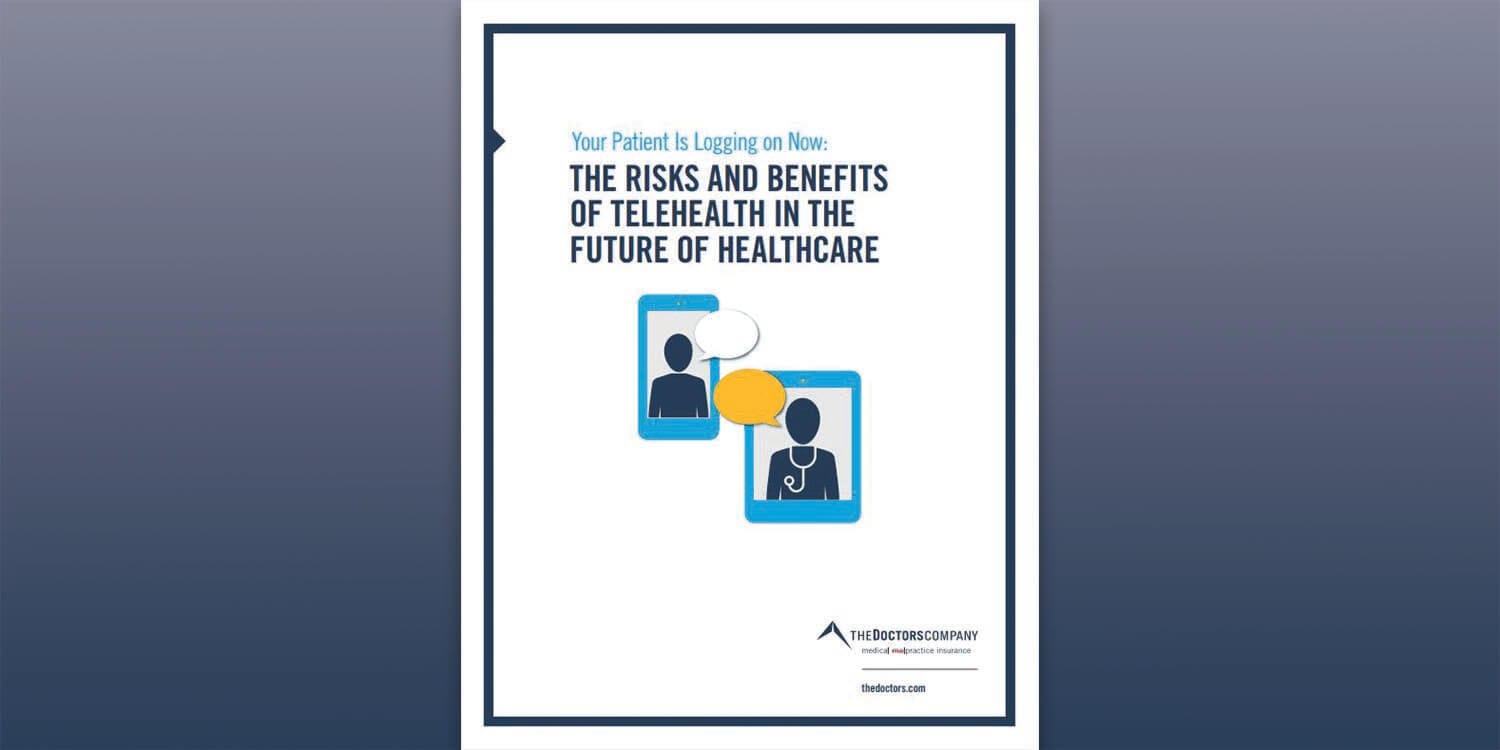
The Doctors Company recently released its report on the future of telemedicine. Here are MEDPLI’s 3 big takeaways from the report.
The Doctors Company recently released its report on the future of telemedicine, Your Patient Is Logging on Now: The Risks and Benefits of Telehealth in the Future of Healthcare. The comprehensive report discusses the booming state of telemedicine and what the future holds and includes anecdotes from physicians about the challenges they face when treating patients with telemedicine. In particular, the report details the myriad risks involved. Here are MEDPLI’s 3 top takeaways from the report as they concern the risks associated with telemedicine services, and what doctors can do to protect patients and themselves.
1. Cybersecurity and Privacy are at risk – take precautions and make sure your liability insurance has you covered
HIPAA regulations surrounding telemedicine mandate that healthcare appointments use encrypted technology platforms. However, The Doctors Company reports that due to the relative novelty of telemedicine, doctors and patients are connecting over unsecured devices, increasing the risk of data breaches.
In addition to the threat of cyber liability, privacy risks are on the rise. The report suggests that healthcare staff, family members or even complete strangers can pose a privacy threat when they are unknowingly within earshot of telemedicine appointments. The report mentions that “many [doctors] have a favorite anecdote about a patient beginning their appointment in an unexpected location, such as their local grocery store.”
To avoid resulting lawsuits from breaches in cybersecurity and privacy, prevention is vital. Additionally, doctors need to make sure their liability insurance (business and medical malpractice) protects them.
To prevent breaches in cybersecurity, your practice or healthcare system should:
To prevent breaches in privacy, the report suggests making privacy a top priority, no matter the situation. Solutions for this include:
To ensure your liability insurance covers cybersecurity and privacy breaches:
2. Misdiagnoses still happen. The best way to protect yourself is with your medical malpractice insurance policy
The report cites, “As a component of claims, telemedicine has increased in the last 15 years (as its adoption has increased), but its footprint within our [The Doctors Company] claims database remains small. Of the telemedicine claims we have seen, the most common allegation has been missed diagnosis, and the most commonly missed diagnosis was cancer.”
Telemedicine cannot be treated as a full replacement for in-person visits, so physicians must err on the side of caution when they are concerned about a patient’s health.
In the event of a misdiagnosis, you need to make sure you have telemedicine malpractice insurance. You want to make sure your policy is underwritten to cover the following:
3. Laws surrounding telemedicine are constantly changing. Stay up-to-date with the telemedicine laws in your state
Due to COVID-19, most states have relaxed their telemedicine laws. Some allow for physicians licensed out of state to treat patients. Others have made it easier for doctors to prescribe controlled substances via telemedicine. But these allowances are subject to change.
According to the report, “providers must stay on top of updates as conditions change. The Center for Connected Health Policy offers a state-to-state guide to telehealth laws that includes prescribing [medicine], but ultimately, routine checks of the state’s medical board website are a provider’s best protection against fines, professional censure, and civil or even criminal liability.”
To stay on top of changes to telemedicine law, visit your state’s medical board website. See below for links to medical board sites for each U.S. state.
If you are a physician practicing telemedicine or considering it, contact MEDPLI for a quote on telemedicine malpractice insurance. We will get you a great rate from an A-rated carrier that protects you against exorbitant damages and attorney fees.



